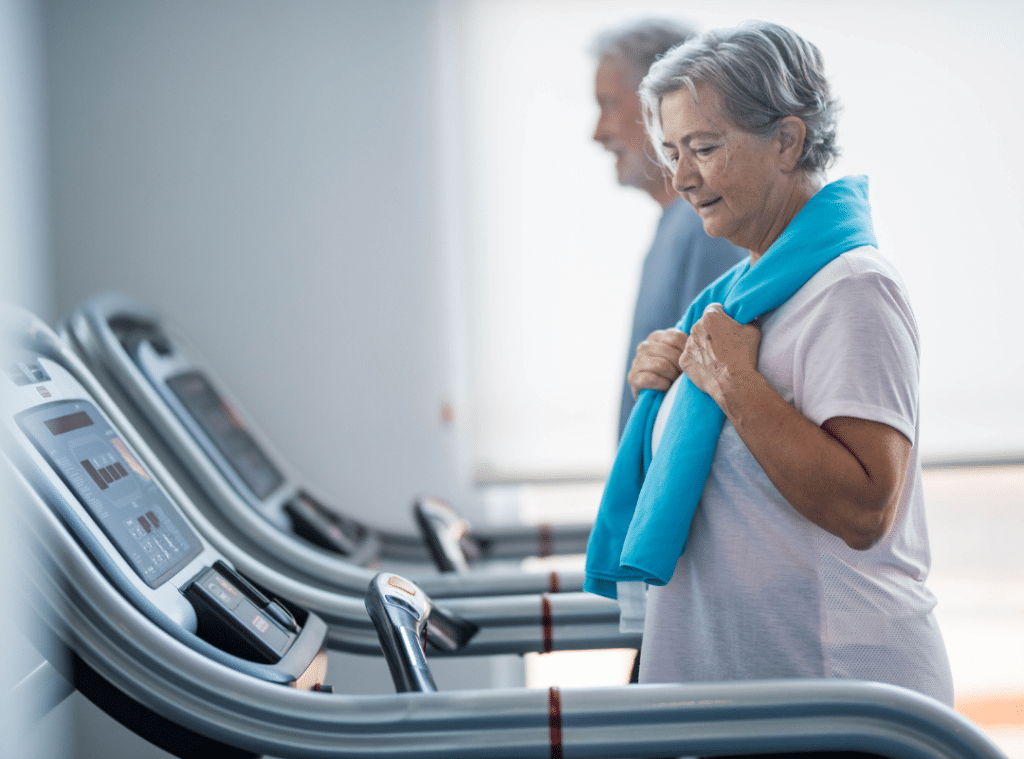As we age, staying active becomes more important than ever—especially when it comes to heart health. Cardio exercises for seniors are a safe and effective way to improve cardiovascular function, enhance mood, and support overall physical well-being.
Whether you’re living in a community like Westmont of Morgan Hill or enjoying retirement at home, adding the right cardio exercises into your routine can make a powerful difference. Even better, there are plenty of free cardio exercises for seniors that can be done at home—no gym or expensive equipment needed. In this article, we’ll explore the safest and most beneficial ways to get moving, build endurance, and protect your heart.
The Importance of Cardiovascular Exercise in Aging
Cardiovascular health plays a vital role in aging gracefully. Engaging in cardio exercises for seniors strengthens the heart, improves circulation, and helps manage chronic conditions like high blood pressure, type 2 diabetes, and arthritis.
Routine cardio workouts can also reduce stress and promote better sleep, making them a cornerstone of healthy aging. The body releases endorphins during physical activity, enhancing both mood and mental clarity. Even light movement improves flexibility, making daily tasks easier and reducing the risk of falls.
According to the American Heart Association, older adults should aim for at least 150 minutes of moderate aerobic activity each week. That may sound like a lot—but with so many cardio exercises for seniors at home, it’s easier than ever to reach this goal at your own pace.
Low-Impact Options: Safe and Joint-Friendly
For seniors, low-impact cardio is often the best choice. These exercises are gentle on joints but still provide powerful heart benefits.
Some excellent options include:
- Chair exercises (especially beneficial for those with mobility limitations)
- Walking indoors or outdoors
- Swimming or water aerobics
- Stationary cycling
- Seated leg lifts and arm circles
At Westmont of Morgan Hill, we recommend starting with familiar movements, then slowly increasing duration or intensity. For additional ideas, check out our guide to 10 essential senior fitness workouts, which includes great cardio exercises for seniors, no equipment needed.
Free Cardio Exercises for Seniors at Home
You don’t need a gym membership to stay active. Many seniors prefer working out in the comfort of their own homes. Here’s a list of cardio exercises at home that are both effective and accessible:
Walking in Place
Marching in place while watching TV or listening to music is one of the simplest and most effective ways to get your heart pumping.
Arm Raises and Circles
These low-resistance moves improve shoulder mobility and increase heart rate when done in sets.
Seated Marching
Ideal for those with limited mobility, seated marching provides cardio benefits while reducing fall risks.
Step-Ups on a Low Stair
Strengthens legs and boosts cardiovascular endurance.
Side Steps and Grapevines
Add rhythm by stepping side to side across the room. A great warm-up or full workout, depending on intensity.
Looking for more ideas? These free cardio exercises for seniors are widely available through YouTube channels such as HASfit and SilverSneakers, offering instructor-led routines that are easy to follow and specifically designed for older adults.

Staying Safe During Cardio Workouts
No matter your fitness level, safety comes first. To avoid injury and enjoy the full benefits of cardio exercises for seniors, follow these important precautions:
- Always warm up with light movements and stretches before starting.
- Wear proper footwear to avoid slipping or joint strain.
- Stay hydrated, especially in warm climates or after longer sessions.
- Listen to your body—stop if you feel dizzy, short of breath, or unwell.
- Use chairs, railings, or wall support if necessary for balance.
If you’re new to exercise or have pre-existing conditions, speak with your healthcare provider before starting. Additionally, you can ease into movement with beginner-friendly chair workouts for seniors that promote strength and stamina.
Building a Weekly Routine that Works
Establishing a consistent exercise routine makes it easier to stay motivated and track your progress. Here’s a sample weekly plan tailored to cardio exercises for seniors at home:
- Monday: 20-minute walk around the neighborhood
- Tuesday: Chair exercises + arm circles (15–20 mins)
- Wednesday: Stationary cycling or step-ups (20–30 mins)
- Thursday: Yoga or stretching
- Friday: Seated marching + side steps (15 mins each)
- Saturday: Group class or virtual cardio session
- Sunday: Rest or light stretching
Whether you prefer solo workouts or participating in group activities, the key is consistency. Mix in various activities to prevent boredom and strengthen different muscle groups.
Lifestyle Tips for Healthy Aging
In addition to physical activity, certain lifestyle habits can boost your overall wellness:
- Eat nutrient-rich foods like leafy greens, lean proteins, and whole grains.
- Maintain strong social ties through community groups or family gatherings.
- Get regular sleep, aiming for 7–9 hours per night.
- Manage stress through breathing exercises, meditation, or hobbies.
Combining these habits with daily movement, like cardio exercises for seniors, supports longevity and enhances your day-to-day energy.
Real Results from Real Routines
Residents at Westmont of Morgan Hill consistently report increased vitality and improved outlook after integrating low-impact cardio into their routines. Even just 10–15 minutes a day can elevate your energy levels and help maintain independence.
For seniors who are hesitant to begin, know that every step counts—literally. Starting with cardio exercises for seniors, no equipment allows for a gentle introduction and builds confidence over time.
Take Charge of Your Heart Health Today
It’s never too late to prioritize your well-being. From walking in place to full-body chair workouts, the possibilities for cardio exercises for seniors at home are endless—and accessible to everyone.
Whether you’re just starting or looking to diversify your routine, these activities offer a low-barrier, high-reward path to a healthier, happier life. With plenty of free cardio exercises for seniors available online or within your community, staying active has never been more convenient.
Ready to Get Moving? Take the First Step Today!
Incorporating cardio into your routine doesn’t require a gym, expensive classes, or even a lot of space. With a little motivation and the right guidance, you can enjoy the benefits of a stronger heart, better mobility, and a more energized life.
If you’re looking for a community that supports your wellness journey, call Westmont of Morgan Hill at 408-779-8490 or schedule a tour today. Let’s move forward—together!
Dive into the vibrant life our Westmont communities have to offer.Find Where You Belong
Frequently Asked Questions
What is the best cardio exercise for seniors?
The best cardio exercise for seniors is one that’s low-impact, safe, and easy to maintain consistently. Walking, swimming, and cycling are excellent options because they improve heart health without putting too much strain on the joints. Many seniors also enjoy group fitness classes like water aerobics, which add a social element. Ultimately, the best exercise is the one a senior enjoys and can stick with regularly.
What is the best cardio for a 70-year-old woman?
For a 70-year-old woman, gentle yet effective cardio like brisk walking, swimming, or stationary biking works well. These activities strengthen the heart while being gentle on the knees, hips, and back. Chair exercises and light dance classes are also good options, adding fun and variety. It’s important to start slow, monitor how the body responds, and gradually increase intensity under a doctor’s guidance.
What is the number one exercise seniors should do?
Walking is often considered the number one exercise for seniors because it’s accessible, safe, and effective. It supports cardiovascular health, strengthens muscles, and boosts mood. Even short daily walks can significantly improve mobility and overall wellness. Plus, walking requires no special equipment, making it easy to fit into any lifestyle.
What is the most effective cardio at home?
The most effective cardio exercises at home for seniors include marching in place, step-ups on a sturdy surface, or using a stationary bike. Chair-based cardio routines are also popular, especially for those with balance concerns. These workouts raise the heart rate while keeping movements controlled and safe. The key is consistency—doing a little every day can make a big difference in health and stamina.









